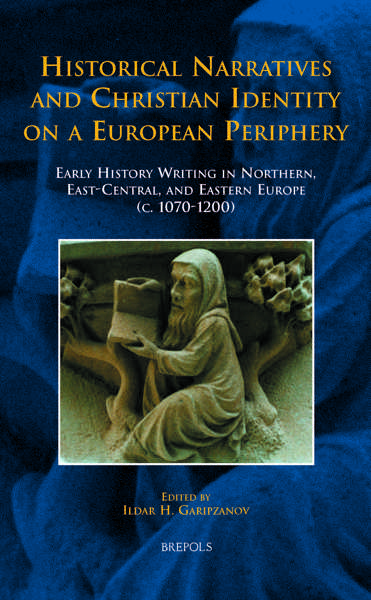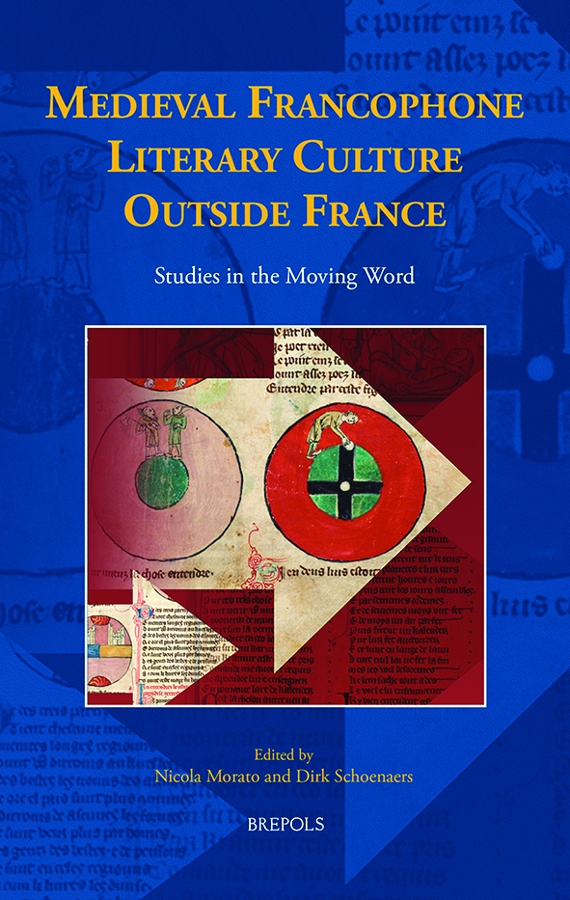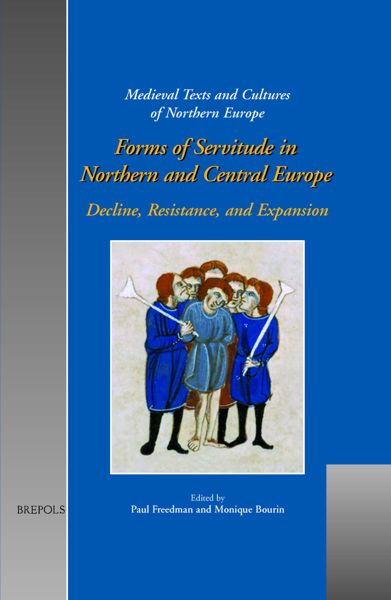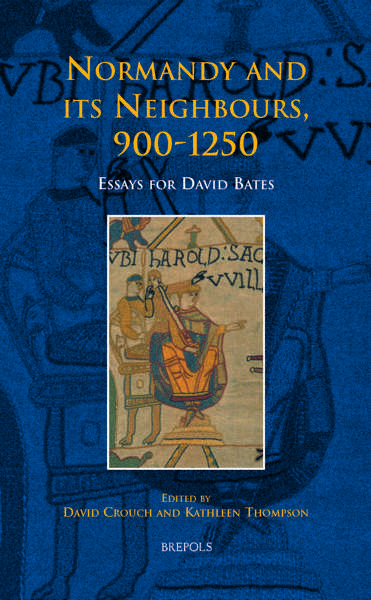
Medieval Francophone Literary Culture Outside France
Studies in the Moving Word
Nicola Morato, Dirk Schoenaers (eds)
- Pages: xvi + 576 p.
- Size:156 x 234 mm
- Illustrations:28 b/w, 6 tables b/w.
- Language(s):English, French
- Publication Year:2019
- € 110,00 EXCL. VAT RETAIL PRICE
- ISBN: 978-2-503-55444-0
- Hardback
- Available
- € 110,00 EXCL. VAT RETAIL PRICE
- ISBN: 978-2-503-55506-5
- E-book
- Available
This volume is one of the final outputs of the AHRC project Medieval Francophone Literary Culture Outside France (2011-2014). It suggests a new way of reading Medieval French Literary Culture in its global dimension, by a close study of some major dynamics of production and circulation of French texts and manuscripts. It focuses on the two major axes of transmission of francophone textual culture: one going from Normandy and England across Flanders, to Burgundy; another across the Alps to Northern Italy and then to Cyprus and the Levant.
“Morato and Schoenaers’s Medieval Francophone Literary Culture Outside France adds considerably to our understanding of the use of French throughout late medieval Europe and the Mediterranean. Its strengths lie not only in the thematic, geographic, and linguistic breadth of individual contributions, but also in the willingness of the editors and authors to consider new disciplinary frameworks. (Thomas O’Donnell, in The Medieval Review, 22.01.27)
In medieval Europe, cultural, political, and linguistic identities rarely coincided with modern national borders. As early as the end of the twelfth century, French rose to prominence as a lingua franca that could facilitate communication between people, regardless of their origin, background, or community. Between the twelfth and fifteenth centuries, literary works were written or translated into French not only in France but also across Europe, from England and the Low Countries to as far afield as Italy, Cyprus, and the Holy Land. Many of these texts had a broad European circulation and for well over three hundred years they were transmitted, read, studied, imitated, and translated.
Drawing on the results of the AHRC-funded research project Medieval Francophone Literary Culture Outside France, this volume aims to reassess medieval literary culture and explore it in a European and Mediterranean setting. The book, incorporating nineteen papers by international scholars, explores the circulation and production of francophone texts outside of France along two major axes of transmission: one stretching from England and Normandy across to Flanders and Burgundy, and the other running across the Pyrenees and Alps from the Iberian Peninsula to the Levant. In doing so, it offers new insights into how francophone literature forged a place for itself, both in medieval textual culture and, more generally, in Western cultural spheres.
Preface
Introduction
Medieval Francophone Literature and its Path to Universality – NICOLA MORATO AND DIRK SCHOENAERS
I. Southern Axis. Mediterranean Europe, and Middle East
Inside / Outside Grammar: The French of Italy between Structuralism and Trends of Exoticism – FABIO ZINELLI
That Obscure Object of Desire: French in Southern Italy – CHARMAINE LEE
Medieval Misogyny and the French of Italy. The Chastiemusart and the Proverbia que dicuntur super natura feminarum — F. REGINA PSAKI
French Manuscripts of the Lancelot en prose Preserved in Spain and Portugal — LOURDES SORIANO-ROBLES
Boethius in Cyprus? Pierre de Paris’s Translation of the Consolatio Philosophiae — CHIARA CONCINA
Jehan de Journi’s Disme de Penitanche and the Production of a Vernacular Confessional Text in Outremer — MARISA GALVEZ
II. Northern Axis. England, Flanders, and the Empire
Wolfram von Eschenbach, Gottfried von Strassburg, and the Politics of Literary Adaptation. The Grail and Tristan Romances and the Court of Otto IV (1198–1218) — ADRIAN STEVENS
Middle Dutch Poets and Their Francophone Sources: Respect and Reservations — FRANK BRANDSMA
‘Ic wille te mire jeesten gaen’: Reworking La Mort le roi Artu in the Low Countries — MARJOLEIN HOGENBIRK
Context-Based Compilation? The Use of the Histoire ancienne jusqu’à César and the Function of the matière d’Alexandre in the Chronique de Baudouin d’Avesnes — FLORENT NOIRFALISE
III. Material and Documentary Evidence
Religious Reading in French and Middle Dutch in the Southern Low Countries and Northern France (c. 1400–c. 1520) — MARGRIET HOOGVLIET
An Italian Reader of the Chroniques d’Angleterre by Jean de Wavrin: Pierre Villa and MS BNF f. fr. 87 — VICTOR JANTE
Francophone Troubadours: Assimilating Occitan Lyric in Medieval France — ELIZA ZINGESSER
IV. Textual Evidence
Machaut’s Literary Legacy in the Crown of Aragon: The Catalan Chansonnier Vega–Aguiló and the Anonymous Roman de Cardenois — ANNA ALBERNI
Magna Graecia and the Matter of Troy in the Francophone Mediterranean — MARILYNN DESMOND
Translatio Networks in the Prose Troy Tradition — JESSICA STOLL
V. Constructing auctoritas. French, Occitan, and Italian
Staging Francophone Identities: Latin First Crusade Narratives and the Epic Conflict of French and Occitan — PATRICIA GILLIES
‘In lingua est diversitas’: Medieval Francophone and Occitanophone Literary Cultures in Catalonia and Italy – COURTNEY WELLS
French Literary Identity in Translation: The Roman de la Rose and Its Tuscan Adaptations – LAURA CHUHAN CAMPBELL
Afterword – BILL BURGWINKLE




